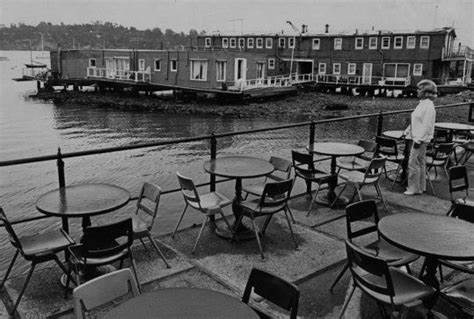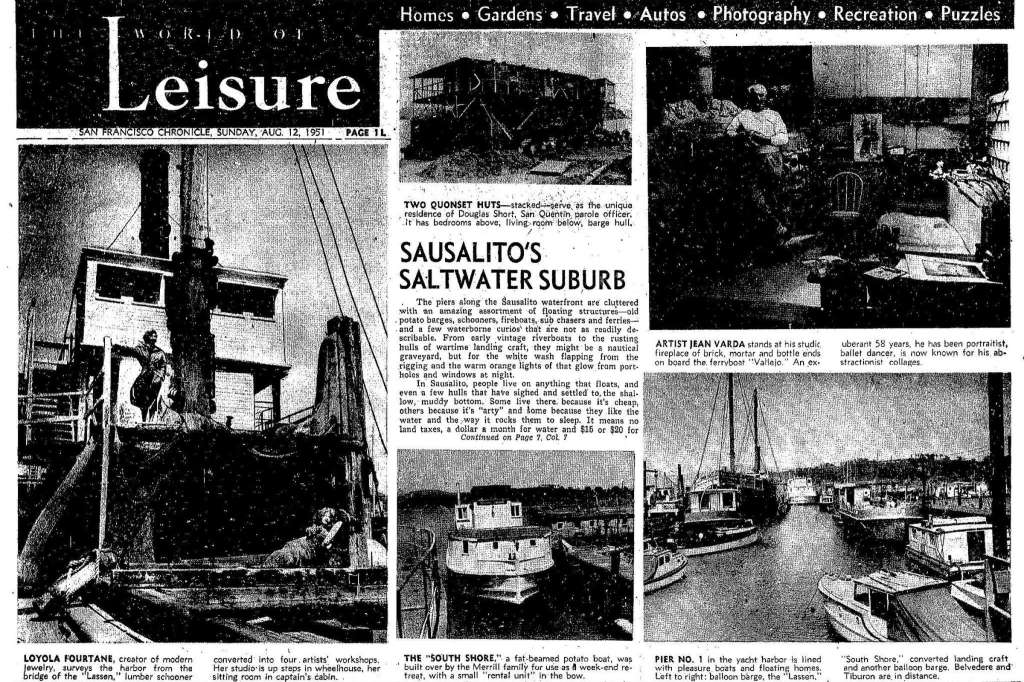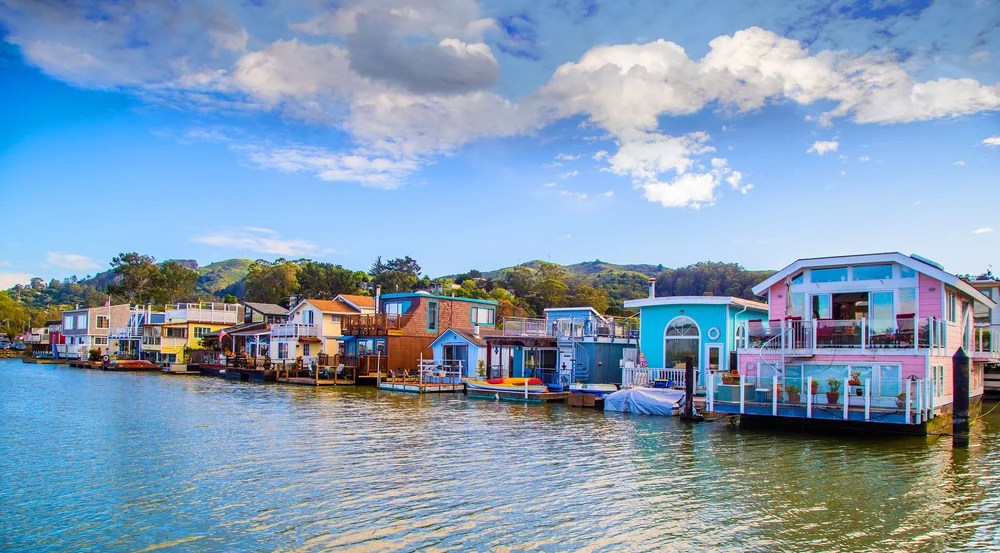

Houseboat design is a captivating intersection of architecture, engineering, and maritime innovation. Sausalito Architects tasked with crafting these floating dwellings must navigate a myriad of concerns, from structural integrity to environmental sustainability, while infusing each design with creativity and elegance. By addressing these challenges with ingenuity and foresight, architects can create houseboats that not only fulfill the practical needs of their occupants but also inspire a sense of wonder and adventure on the open water.
Beyond functionality, houseboat design presents an opportunity for Sausalito architects to evoke beauty and elegance on the water. Embracing the principles of maritime architecture, designers can seamlessly integrate form with function, harmonizing with the natural surroundings while expressing the unique character of the vessel. Thoughtful attention to detail, from exterior finishes to interior aesthetics, enhances the visual appeal of houseboats, transforming them into floating works of art.
Space is at a premium in houseboat design, necessitating creative strategies to optimize every square inch. Sausalito Architects must design multi-functional spaces that serve dual purposes, maximizing usability without sacrificing comfort. Incorporating clever storage solutions, flexible furniture arrangements, and compact fixtures enables architects to craft efficient yet inviting interiors tailored to the unique needs of houseboat living.
The history of houseboat architecture in Sausalito, California, is a fascinating tale that dates back to the mid-20th century. Sausalito, our picturesque waterfront town located just north of San Francisco, and its houseboat community has a unique and storied past.

Origin of Sausalito Houseboats: The roots of the houseboat community in Sausalito can be traced back to the 19th century when floating homes and houseboats were used for various practical purposes, including fishing and transportation. However, it was during the 1960s that the houseboat culture as we know it today began to take shape.
During the second world war, the houseboats of Richardson Bay were evicted to make way for a giant 200-acre shipyard. In the next three and half years, the Marinship Corporation built a staggering 93 ships there. At its peak, 20,000 workers toiled around the clock.
Post-World War II Era: After World War II, Sausalito, like many other waterfront communities in the United States, saw a decline in its industrial activities. Abandoned boats and barges began to fill the shores of Richardson Bay. As a result, artists and bohemians, drawn by the allure of a cheaper and alternative lifestyle, started to move into these abandoned vessels and converted them into floating homes.
The Hippie Movement: The 1960s counterculture movement, particularly the “Hippie” culture, had a significant impact on Sausalito’s houseboat community. Many free-spirited individuals seeking an unconventional lifestyle and communal living found solace on these floating homes. The colorful and eclectic houseboat community became a symbol of the era’s bohemian ideals designed by some of the best architects in Sausalito.

Legal Challenges: The growing houseboat community faced various legal challenges during its early years. The local government questioned the legality of these makeshift dwellings, leading to zoning and land-use disputes. However, over time, the residents successfully navigated these challenges and secured legal recognition for their unique way of life.

Houseboat Tours and Attraction: As the houseboat community in Sausalito gained fame, it became a popular attraction for tourists. Boat tours started offering visitors a glimpse into this vibrant and artistic waterfront community.

Evolution and Change: Over the years, the Sausalito houseboat community has evolved and diversified. Some houseboats have been modernized with advanced amenities, while others retain their artistic and bohemian charm. The community comprises people from various backgrounds, including artists, writers, professionals, and retirees, who have found a sense of belonging in this picturesque and unconventional neighborhood.

Continuing Challenges: Despite its allure and unique appeal, the Sausalito houseboat community has faced ongoing challenges related to housing regulations, environmental concerns, and changing waterfront development plans. The best ways to preserve this valuable, wonderful and distinctive way of life remains a topic of discussion among residents and local authorities.
Today, the houseboat community in Sausalito remains an essential part of the town’s identity, attracting visitors and residents alike who are drawn to its rich history, artistic ambiance, and stunning waterfront views. It stands as a testament to the power of community and creativity in shaping a unique and enduring cultural phenomenon.
Designing a houseboat in Sausalito:
Designing a houseboat in Sausalito, a popular location for houseboats in the Bay Area, comes with its own unique set of challenges. Here are some considerations specific to Sausalito that you may encounter during the design process:
Building Regulations: Sausalito has specific building regulations and codes that govern houseboat construction. These regulations often cover issues such as height restrictions, setbacks from shorelines, flotation requirements, and environmental considerations. It is crucial to thoroughly understand and adhere to these regulations to ensure compliance and obtain the necessary permits.
Mooring and Slip Availability: Finding an available mooring or slip for your houseboat in Sausalito can be a challenge due to high demand and limited space. The availability of slips may impact the size and design of your houseboat, as you will need to fit within the designated space. It’s important to consider this aspect early on in the design process and work closely with marinas or harbor authorities to secure a suitable mooring location.
Environmental Impact: Sausalito places a strong emphasis on environmental preservation and sustainability. As such, you will need to consider the ecological impact of your houseboat design. This may involve implementing eco-friendly building materials, incorporating renewable energy systems, and addressing waste management and water treatment solutions.
Stability and Seismic Considerations: Sausalito is located in an area prone to seismic activity, so your houseboat design should account for stability and structural integrity. Working with marine engineers who have experience in seismic-resistant designs is essential to ensure the safety of your houseboat during earthquakes or tremors.
Privacy and Community: Sausalito’s houseboat community is tight-knit, and privacy can be a concern. Consider incorporating design elements that provide a balance between openness and privacy, such as strategically positioned windows, fencing, or landscaping. Respecting the community’s norms and regulations is also crucial to maintaining a harmonious living environment.
Utilities and Infrastructure: Ensure that your houseboat design addresses essential utilities such as water, electricity, and sewage systems. Since houseboats are not connected to traditional infrastructure networks, you will need to plan for alternative solutions such as water tanks, on-board power generation, and appropriate waste management systems.
Access and Transportation: Houseboats in Sausalito may have limited access to roads and parking. Consider how you will transport construction materials to the site and plan for transportation options for yourself and guests. Additionally, factor in accessibility requirements for people with disabilities during the design process.
Maintenance and Durability: Given the exposure to saltwater and the harsh marine environment, houseboats in Sausalito require regular maintenance. Incorporate materials and finishes that are resistant to corrosion, moisture, and UV damage. Consider using marine-grade materials and coatings to ensure the longevity and durability of your houseboat.
Navigating these challenges will require working closely with professionals who have experience in houseboat design and construction in the Sausalito area. Engaging with local architects, marine engineers, and contractors who are familiar with the specific requirements and regulations can help ensure a successful and compliant design process.
